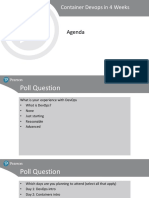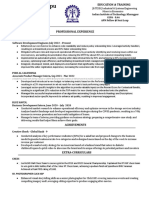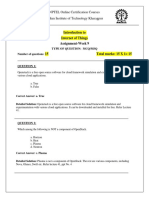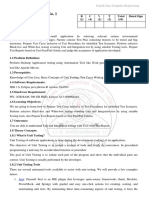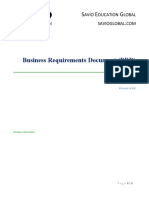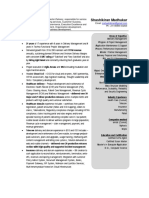0% found this document useful (0 votes)
193 views7 pagesKubernetes Troubleshooting Guide
The document discusses 25 common Kubernetes errors and provides troubleshooting steps and example commands to diagnose and resolve each issue. The errors covered include unable to connect to cluster, pods stuck in pending state, insufficient resources, image pull failures, crash loops, unauthorized access, configmaps not updating, unreachable services, unready nodes, pending PVCs, faulty volume mounts, restrictive pod security policies, incorrect service account permissions, non-matching node selectors, misconfigured ingress, unable to scale deployments, malfunctioning custom resources, pods stuck in terminating state, exceeded resource quotas, rolling updates not progressing, problematic node draining/cording, resource creation timeouts, pods stuck in container creating, invalid YAML syntax, and etcd
Uploaded by
satyaCopyright
© © All Rights Reserved
We take content rights seriously. If you suspect this is your content, claim it here.
Available Formats
Download as PDF, TXT or read online on Scribd
0% found this document useful (0 votes)
193 views7 pagesKubernetes Troubleshooting Guide
The document discusses 25 common Kubernetes errors and provides troubleshooting steps and example commands to diagnose and resolve each issue. The errors covered include unable to connect to cluster, pods stuck in pending state, insufficient resources, image pull failures, crash loops, unauthorized access, configmaps not updating, unreachable services, unready nodes, pending PVCs, faulty volume mounts, restrictive pod security policies, incorrect service account permissions, non-matching node selectors, misconfigured ingress, unable to scale deployments, malfunctioning custom resources, pods stuck in terminating state, exceeded resource quotas, rolling updates not progressing, problematic node draining/cording, resource creation timeouts, pods stuck in container creating, invalid YAML syntax, and etcd
Uploaded by
satyaCopyright
© © All Rights Reserved
We take content rights seriously. If you suspect this is your content, claim it here.
Available Formats
Download as PDF, TXT or read online on Scribd
/ 7


































